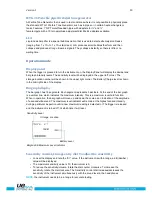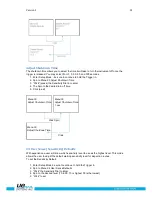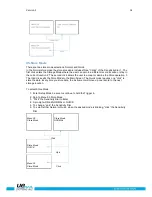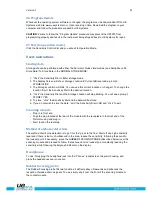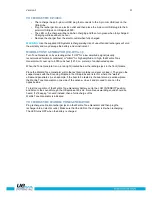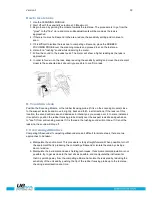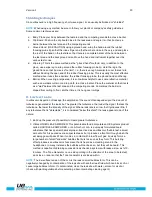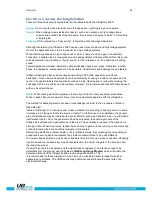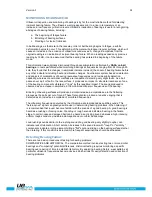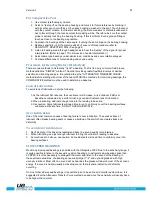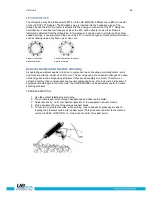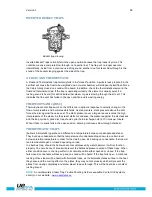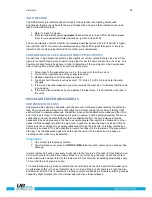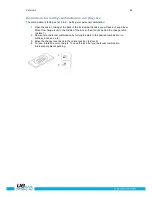
Version 1
24
MONITORING BEARING WEAR
Ultrasonic inspection and monitoring of bearings is by far the most reliable method for detecting
incipient bearing failure. The ultrasonic warning appears prior to a rise in temperature or an
increase in low frequency vibration levels. Ultrasonic inspection of bearings is useful in recognizing
all stages of bearing failure, including:
a. The beginning of fatigue failure.
b. Brinelling of bearing surfaces.
c. Flooding of or lack of lubricant.
In ball bearings, as the metal in the raceway, roller or ball bearing begins to fatigue, a subtle
deformation begins to occur. This deforming of the metal will produce irregular surfaces, which will
cause an increase in the emission of ultrasonic sound waves. A change in amplitude from the
original reading is an indication of incipient bearing failure. When a reading exceeds any previous
reading by 12 dB, it can be assumed that the bearing has entered the beginning of the failure
mode.
This information was originally discovered through experimentation performed by
NASA on ball
bearings.
In tests performed while monitoring bearings at frequencies ranging from 24 through 50
kHz, they found that the changes in amplitude indicate incipient (the onset of) bearing failure before
any other indicators including heat and vibration changes. An ultrasonic system based on detection
and analysis of modulations of bearing resonance frequencies can provide subtle detection
capability; whereas conventional methods are incapable of detecting very slight faults. As a ball
passes over a pit or fault in the race surface, it produces an impact. A structural resonance of one
of the bearing components vibrates or "rings" by this repetitive impact. The sound produced is
observed as an increase in amplitude in the monitored ultrasonic frequencies of the bearing.
Brinelling of bearing surfaces will produce a similar increase in amplitude due to the flattening
process as the balls get out of round. These flat spots also produce a repetitive ringing that is
detected as an increase in amplitude of monitored frequencies.
The ultrasonic frequencies detected by the Ultraprobe are reproduced as audible sounds. This
"heterodyned" signal can greatly assist a user in determining bearing problems. When listening, it
is recommended that a user become familiar with the sounds of a good bearing. A good bearing is
heard as a rushing or hissing noise. Crackling or rough sounds indicate a bearing in the failure
stage. In certain cases a damaged ball can be heard as a clicking sound whereas a high intensity,
uniform rough sound may indicate a damaged race or uniform ball damage.
Loud rushing sounds similar to the rushing sound of a good bearing only slightly rougher, can
indicate lack of lubrication. Short duration increases in the sound level with "rough" or "scratchy"
components indicate a rolling element hitting a "flat" spot and sliding on the bearing surfaces rather
than rotating. If this condition is detected, more frequent examinations should be scheduled.
Detecting Bearing Failure
There are two basic procedures of testing for bearing problems:
COMPARATIVE AND HISTORICAL. The comparative method involves testing two or more similar
bearings and "comparing" potential differences. Historical testing requires monitoring a specific
bearing over a period of time to establish its history. By analyzing bearing history, wear patterns at
particular ultrasonic frequencies become obvious which allows for early detection and correction of
bearing problems.
Содержание Ultraprobe 3000
Страница 1: ...Version 1 1 Ultraprobe 3000 Instruction Manual ...
Страница 6: ...Version 1 6 Ultraprobe 3000 ...

